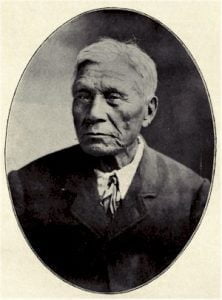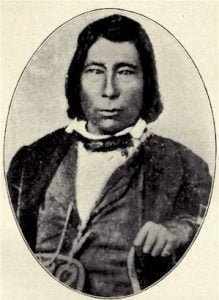Origin of the War with the Coeur d’Alene, Spokane and Palouse
The month of May, 1858, was a disastrous one for the army on the Pacific. On the 8th, Colonel Steptoe set out from Fort “Walla Walla, with a small command of one hundred and fifty-nine men, to make a reconnaissance of the country, to examine into affairs at Fort Colville, and to seize some marauders belonging to the Pelouze tribe, who had stolen cattle from the Fort. As this is a feeble tribe, his force was considered quite sufficient to overawe them, while the more powerful tribes through which he was to pass had always professed friendship, and there had … Read more






